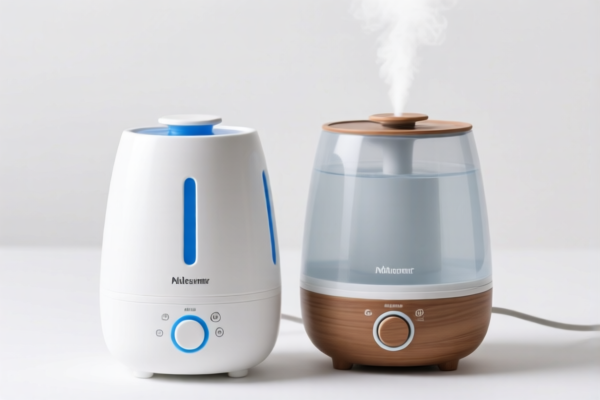| HS Code | Official Doc | Tariff Rate | Origin | Destination | Effective Date |
|---|---|---|---|---|---|
| 8516909000 | Doc | 58.9% | CN | US | 2025-05-12 |
| 8543708800 | Doc | 30.0% | CN | US | 2025-05-12 |
| 8543906800 | Doc | 55.0% | CN | US | 2025-05-12 |
| 3923900080 | Doc | 58.0% | CN | US | 2025-05-12 |




Heated Lunch Box
A heated lunch box is a portable, self-contained container designed to warm food, typically for use outside the home. It provides a convenient alternative to relying on microwaves or other warming facilities when access is limited.
Materials
Heated lunch boxes are constructed from a variety of materials, often a combination for insulation, heating, and durability:
- Outer Shell: Commonly made of durable plastics (polypropylene, ABS), stainless steel, or aluminum alloys for impact resistance and ease of cleaning.
- Inner Container: Often stainless steel for food safety, ease of cleaning, and resistance to corrosion. Some use food-grade plastics, though stainless steel is preferred.
- Heating Element: Typically an electrical resistance heater.
- Insulation: Materials like foam or air gaps are used to retain heat.
- Power Source: Can include AC power (for use with standard outlets), DC power (for car cigarette lighters), or rechargeable batteries (lithium-ion being common).
Purpose
The primary purpose of a heated lunch box is to provide warm meals on the go. This caters to individuals who:
- Work or travel frequently.
- Have limited access to microwave ovens or other warming facilities.
- Desire a hot, home-cooked meal instead of relying on pre-packaged options.
- Have dietary restrictions or preferences that necessitate bringing their own food.
Function
Heated lunch boxes function by utilizing a heating element to raise the temperature of the food contained within. The process generally involves:
- Power Connection: The box is connected to a power source.
- Heating Element Activation: An electrical current flows through the heating element, generating heat.
- Heat Distribution: The heat is distributed throughout the inner container, warming the food.
- Temperature Regulation: Many models feature temperature control settings or automatic shut-off features to prevent overheating.
- Insulation Retention: Insulation minimizes heat loss, keeping the food warm for an extended period.
Usage Scenarios
- Office/Workplace: Employees can bring a hot lunch to work without relying on shared microwaves.
- Travel: Ideal for long car rides, train journeys, or airplane travel (check airline regulations regarding battery-powered devices).
- Construction Sites/Outdoor Jobs: Provides a warm meal in locations without warming facilities.
- School/University: Students can enjoy a hot lunch or dinner.
- Picnics/Camping: Offers a convenient way to keep food warm during outdoor activities.
Common Types
- Electric Plug-In: Requires access to a standard AC power outlet. Often larger in size.
- 12V Car Lunch Box: Plugs into a car cigarette lighter socket. Suitable for use in vehicles.
- Rechargeable Battery-Powered: Uses a rechargeable battery (typically lithium-ion). Offers portability and convenience. Battery life varies.
- USB-Powered: Powered by a USB port, often used for smaller portions or maintaining temperature rather than fully heating.
- Thermos-Style Heated Lunch Boxes: Combine a traditional thermos design with a heating element. Often battery-powered.
- Multi-Compartment Lunch Boxes: Feature separate compartments for different food items, with individual heating control options in some models.
Heated lunch boxes are containers designed to keep food warm, typically utilizing an electric heating element. They are used for warming pre-cooked meals, often in environments where access to a microwave or other conventional heating methods is limited.
The following HS codes may be relevant, based on the provided information:
- 8516909000: This code covers electric instantaneous or storage water heaters and immersion heaters; electric space heating apparatus and soil heating apparatus; electrothermic hairdressing apparatus (for example, hair dryers, hair curlers, curling tong heaters) and hand dryers; electric flatirons; other electrothermic appliances of a kind used for domestic purposes; electric heating resistors, other than those of heading 8545; parts thereof. The "other electrothermic appliances of a kind used for domestic purposes" portion could apply to a heated lunch box if it functions as a general-purpose heating device for food. The total tax rate is 58.9% (3.9% base tariff + 25.0% additional tariff, increasing to 30.0% after April 2, 2025).
- 3923900080: This code covers articles for the conveyance or packing of goods, of plastics; stoppers, lids, caps and other closures, of plastics. If the heated lunch box is made of plastic and primarily functions as a container for food, this code may be applicable. The total tax rate is 58.0% (3.0% base tariff + 25.0% additional tariff, increasing to 30.0% after April 2, 2025).
According to the provided reference material, the HS code options related to 'heated lunch box' are limited, with only the following 2 found.
Regarding HS code 3923900080, please note the need to verify the material as plastics.
Customer Reviews
No reviews yet.